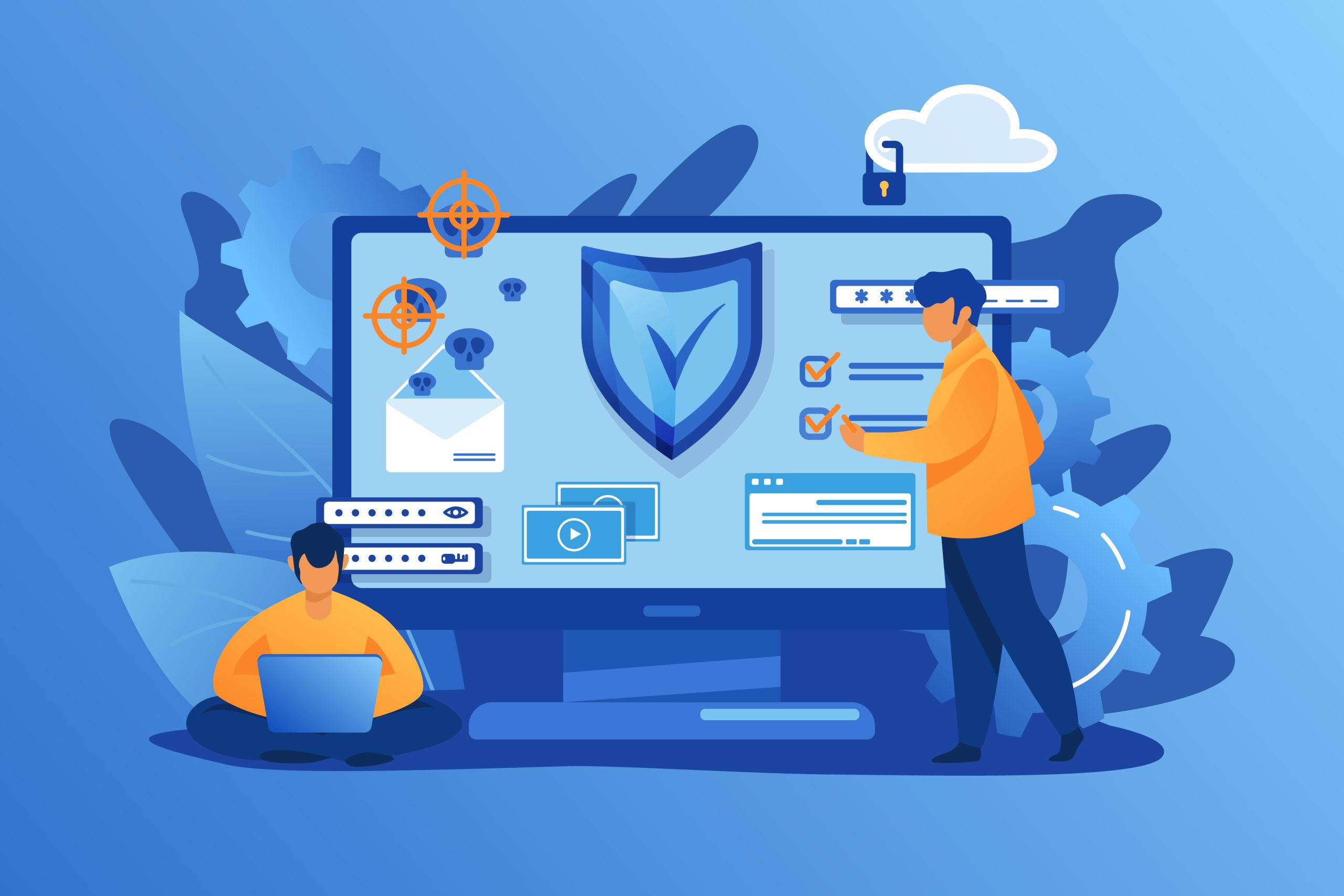Image by pch.vector on Freepik
Introduction
In today’s digital landscape, website security has become a critical concern for businesses and individuals alike. With the prevalence of cyber threats, it is crucial to prioritize the security of your website, especially if you are using WordPress, the most popular content management system (CMS) globally. In this article, we will discuss the significance of website security, focusing on WordPress, and provide you with ten actionable steps to keep your WordPress website secure. Implementing these measures will help safeguard your site against potential vulnerabilities and protect your valuable online assets. Let’s explore these ten ways to enhance your WordPress website security.
Keep WordPress Core and Plugins Updated
Regularly updating your WordPress core and plugins is an essential practice for maintaining a secure website. Developers continuously release updates to address security vulnerabilities and enhance overall performance. By staying up to date, you ensure that your website is equipped with the latest security patches, minimizing the risk of exploitation by cybercriminals.
Choose Reliable WordPress Themes and Plugins
When selecting themes and plugins for your WordPress website, it is crucial to opt for reputable sources. Stick to official WordPress repositories or well-known third-party marketplaces with positive reviews and frequent updates. Reliable themes and plugins undergo regular security audits and receive timely patches, reducing the likelihood of introducing vulnerabilities into your website.
Use Strong and Unique Passwords
Using strong and unique passwords is a fundamental yet often neglected aspect of WordPress security. Weak passwords make it easier for hackers to gain unauthorized access through brute-force attacks. Ensure that your passwords are complex, containing a combination of uppercase and lowercase letters, numbers, and special characters. Additionally, consider using a password manager to generate and store secure passwords for all your accounts.
Implement Two-Factor Authentication (2FA)
Enabling two-factor authentication (2FA) adds an extra layer of protection to your WordPress login process. With 2FA, users must provide a secondary verification method, such as a unique code sent to their mobile device, in addition to their password. This ensures that even if a hacker manages to obtain a user’s password, they would still be unable to access the account without the secondary authentication factor.
Limit Login Attempts to Improve WordPress Security
Limiting login attempts is an effective strategy to prevent brute-force attacks on your WordPress website. By restricting the number of login attempts allowed, you can thwart hackers from repeatedly guessing passwords and gaining unauthorized access. Implement security plugins or add custom code to enforce login attempt restrictions and protect your site from malicious login attempts.
Regularly Back up Your WordPress Website
Regularly backing up your website is a crucial step in mitigating the potential damage caused by security breaches or data loss. Choose a reliable backup solution that automatically saves your website files and databases to secure offsite locations. By having backups readily available, you can quickly restore your website to a previous state in case of an incident, ensuring minimal disruption and data loss.
WordPress Security and Your Login Page
The login page is a common target for hackers attempting to gain unauthorized access to your WordPress website. Strengthen the security of your login page by changing the default “/wp-admin” URL to a custom, less predictable address. Additionally, consider implementing tools like reCAPTCHA or other anti-spam mechanisms to prevent automated bot attacks and protect against brute-force login attempts.
Use SSL Encryption
Implementing SSL (Secure Sockets Layer) encryption is paramount for securing the data transmitted between your website and its visitors. SSL certificates encrypt sensitive information, such as login credentials and personal data, preventing interception and unauthorized access. Install an SSL certificate to enable the HTTPS protocol, establishing a secure connection that enhances both security and user trust.
Monitor and Manage User Permissions
WordPress offers various user roles with different levels of access and capabilities. Properly managing user permissions is crucial for maintaining a secure website. Grant administrative privileges only to trusted individuals who require them and regularly review and remove unnecessary accounts. By monitoring and managing user permissions, you reduce the risk of unauthorized actions and potential security breaches.
Employ a Web Application Firewall (WAF) to Improve WordPress Security
Implementing a Web Application Firewall (WAF) provides an additional layer of protection for your WordPress website. A WAF filters incoming traffic, detecting and blocking malicious requests and potential security threats. It acts as a shield between your website and the internet, preventing attacks such as SQL injections and cross-site scripting. Choose a reputable WAF solution to fortify your website’s security defenses.
Following Best WordPress Security Practices
As the digital landscape continues to evolve, prioritizing website security is paramount for any WordPress website owner. By implementing these ten essential security measures, you can significantly enhance the protection of your WordPress website against potential threats and vulnerabilities. Remember to keep your WordPress core and plugins updated, choose reliable themes and plugins, use strong and unique passwords, enable two-factor authentication, limit login attempts, regularly back up your website, secure your login page, implement SSL encryption, monitor and manage user permissions, and employ a Web Application Firewall (WAF). By following these best practices, you can safeguard your WordPress website and maintain the trust and confidence of your visitors and customers.


